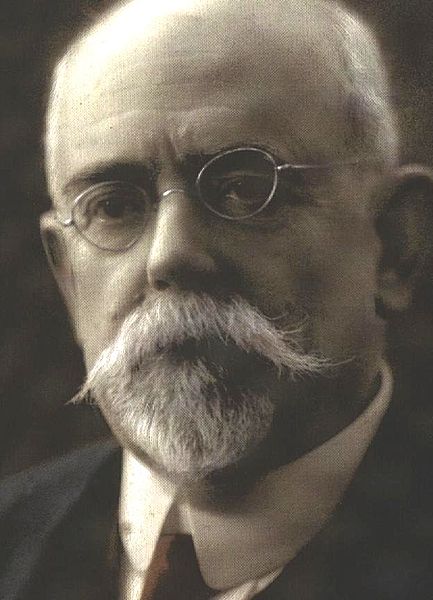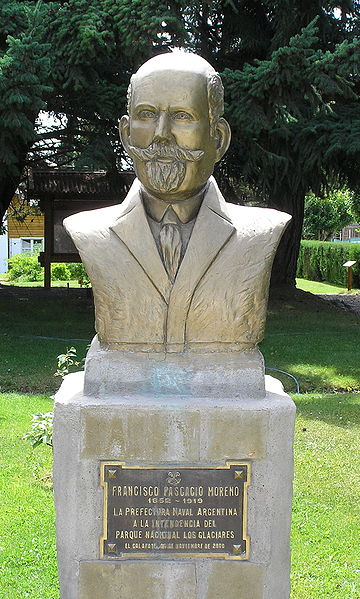<Back to Index>
- Explorer Francisco Pascacio Moreno, 1852
- Painter Walter Richard Sickert, 1860
- King of Portugal and the Algarves Manuel I, 1469
PAGE SPONSOR


Francisco Pascacio Moreno (May 31, 1852 – November 22, 1919) was a prominent explorer and academic in Argentina, where he is usually referred to as Perito Moreno (perito means "specialist, expert").
Moreno was born to Francisco and Juana Thwaites Madero in Buenos Aires. Raised in a traditional patrician family, he studied in local parochial schools. He shared his spare time with his father searching for artifacts and fossils, and at age 14, created a homemade museum of his extensive collections. Following graduation in 1872, he participated in the establishment of the Argentine Scientific Society, and embarked on the first of the series of expeditions that made him well known: a survey of Río Negro Territory, largely uncharted territory which had recently been made accessible by the controversial Conquest of the Desert campaign. In January 1876, he reached Lake Nahuel-Huapi, in the southern Andes, and discovered, on February 14, 1877, Lake San Martín. He also explored numerous rivers in Patagonia, and on March 4, encountered El Chaltén, which he named Mount Fitz Roy.
In 1880 he embarked on a second expedition to the territory of Patagonia, where he was taken prisoner by a Tehuelche aboriginal tribe and condemned to death, but escaped on March 11, one day before the appointed execution. In 1882 – 1883 he explored the Andes from Bolivia southward, and in 1884 – 1885 he made new explorations of the territory south of the Río Negro and of Patagonia. He was director of the anthropological museum of Buenos Aires, chief of the Argentine exploring commission of the southern territories, and member of numerous European scientific societies.
For his contributions to science, Moreno received a doctorate Honoris causa from the National University of Córdoba in 1877. He is also known for his role in defending Argentine interests and his defining surveys leading to the Boundary treaty of 1881 between Chile and Argentina. These surveys and others yielded Moreno a vast collection of archaeological and anthropological findings, for which he created a museum in Buenos Aires in 1877. The institution was incorporated in 1888 into the La Plata Museum of Natural History, the most important of its kind in South America, and of which he served as the first Director, until 1906.
Moreno was appointed Perito (a technical specialist or expert) in 1902, in which capacity he disproved Chilean claims to the continental divide. Moreno proved that many Patagonian lakes draining to the Pacific Ocean were in fact part of the Atlantic Ocean basin, but had been moraine-dammed during the quaternary glaciations, changing their outlets to the west.
In 1903, Moreno donated some of the land previously given to him for the creation of the Nahuel Huapi National Park. The Perito Moreno Glacier and the town of Perito Moreno, all in Santa Cruz Province, are named after him. He was appointed Assistant Director of the National Education Council in 1911 and helped secure funding for the Bernasconi Institute, a landmark primary school built in Buenos Aires on land he sold to Swiss Argentine industrialist Félix Bernasconi; its archaeological and natural history museums were created in part with his extensive collections of artifacts.
He established the Argentine Boy Scouts Association in 1912, and joined former U.S. President Theodore Roosevelt in a tour of Patagonia. Continuing to oversee the La Plata Museum well after his official retirement, political developments in later years led Moreno to join the reactionary Argentine Patriotic League shortly before his death in 1919. Moreno's remains were transferred from a La Recoleta Cemetery crypt to Centinela Isle, in Lake Nahuel Huapi, in 1944.